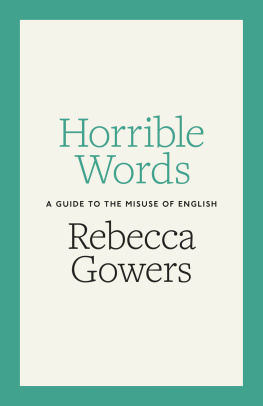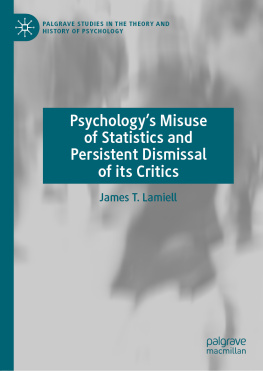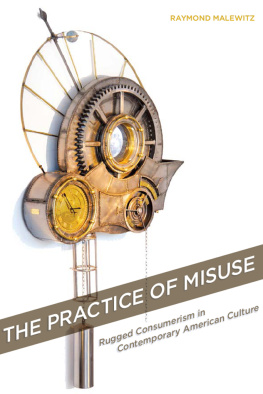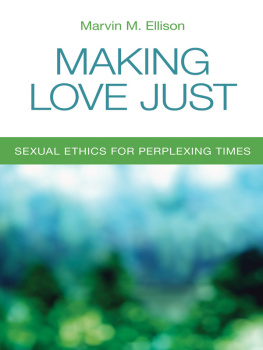Library of Congress Cataloging-in-Publication Data
Names: Baron, Jaimie, author.
Title: Reuse, misuse, abuse: the ethics of audiovisual appropriation in the digital era / Jaimie Baron.
Description: New Brunswick: Rutgers University Press, 2020. | Includes bibliographical references and index.
Identifiers: LCCN 2020007172 | ISBN 9780813599267 (paperback) | ISBN 9780813599274 (cloth) | ISBN 9780813599281 (epub) | ISBN 9780813599298 (mobi) | ISBN 9780813599304 (pdf)
Subjects: LCSH: Stock footage. | Documentary filmsMoral and ethical aspects. | Video recordingsMoral and ethical aspects. | Actualities (Motion pictures) | Gaze in motion pictures.
Classification: LCC PN1995.9.S6964 B37 2020 | DDC 070.1/95dc23
LC record available at https://lccn.loc.gov/2020007172
A British Cataloging-in-Publication record for this book is available from the British Library.
Copyright 2021 by Jaimie Baron
All rights reserved
No part of this book may be reproduced or utilized in any form or by any means, electronic or mechanical, or by any information storage and retrieval system, without written permission from the publisher. Please contact Rutgers University Press, 106 Somerset Street, New Brunswick, NJ 08901. The only exception to this prohibition is fair use as defined by U.S. copyright law.

The paper used in this publication meets the requirements of the American National Standard for Information SciencesPermanence of Paper for Printed Library Materials, ANSI Z39.48-1992.
www.rutgersuniversitypress.org
Manufactured in the United States of America
In November 2015, the Montreal International Documentary Film Festival (RIDM) came under fire for including Quebec filmmaker Dominic Gagnons seventy-four-minute film of the North in its program. As with some of Gagnons previous films, this films imagery was appropriated entirely from clips posted on YouTube. In this case, all the clips were shot by or featured Inuit people. The soundtrack was composed of music by Inuk throat singer Tanya Tagaq. For his use of neither the images nor the music did Gagnon seek or obtain permission from the YouTube posters or from Tagaq. The latter publicly called the film racist, demanded her music be removed from the soundtrack, and became one of the leaders of a campaign against the film. In response to the film, an Inuk broadcaster named Stephen Puskas began contacting as many of the YouTube subjects as he could locate to let them know that their images appeared in Gagnons film. As a result, many asked that their images be removed. Gagnon then began screening a version of the film without music and replaced the images he had been asked to exclude with black. Soon after, Gagnon stopped screening the film altogether, and it is now extremely difficult to see in its original form.
Inevitably, this conflict led to a discussion among filmmakers, programmers, and commentators about freedom of speech versus the long history of white colonial misrepresentation of indigenous peoples. However, it also raises important questions about the artists rights and responsibilities with regard to appropriating recorded sounds and images of other people, particularly in the digital age when so much is so easily available. One of these questions has to do with consent. As Robert Everett-Green noted,
The fracas about Of the North [sic] isnt just about whats in the film, but about how it was made. Gagnon didnt go to the North, and although he identifies each clip at the end of the film, he never tried to contact those whose footage he used; nor anyone who was pictured in it. He figured that if people had allowed YouTube to show their videos to all comers, no further consent was necessary.
Indeed, one of Gagnons lines of defense was to argue that the posted footage was already public and, therefore, fair game. Moreover, Gagnon argued that the film was less about Inuit people than about how people record themselves for platforms like YouTube. He said, To me its more a story about how Inuit people appropriate social media, how they represent themselves, what they feel like doing.
Despite these defenses, many critics, particularly indigenous viewers, continued to find the film offensive. Inuk documentary filmmaker Alethea Arnaquq-Baril accused the film of representing Inuit people as violent, wandering drunks that neglect their children and dont care for the lives of animals: thats the image I took away from the film I think its kind of a cheap move to totally play up a negative stereotype of a marginalized people for your own artistic gain. At least in Arnaquq-Barils view, Gagnons particular choice of videos reflected his preconceived ideas about Inuit people. Arnaquq-Baril also noted that many of the appropriated images were not self-representations but, rather, videos taken without the subjects permission or perhaps even knowledge. Thus, Gagnons selection of clips in of the North constituted, for many viewers, a harmful misrepresentation of his subjects. Moreover, the sense of skewed representation was not due exclusively to the content of the images but also to how Gagnon fitted them together. As Jonathan Culp wrote,
In Of The North [sic], the ugliness inheres not only in the source material, but in the arrangement of sequences. As Gagnon clearly knows, for all his talk of how they represent themselves (the YouTube material was shot by hundreds of amateur Inuit filmmakers), the editor holds the power of meaning and interpretation. And Gagnons perspective is both alienated and ill-informed, almost proudly so.
Gagnons perspective, as conveyed through both choice of material and editing, is not innocent but deeply ideological, whether he acknowledges it or not.
Two sequences involving laughter are particularly illustrative of this fact. In one, we see a man in long shot beating a small seal to death as an unseen woman behind the camera laughs. In another, we see images of raw sewage pouring into a pristine landscape followed by images of caribou eating the sewage, again accompanied by laughter. These are upsetting images, no doubt. Yet, what is most egregious in these scenes, like many others in the film, is the total lack of contextual information. The juxtaposition of animal harm and these Inuit peoples laughter makes the people seem cruel and heartless. However, we have no idea who these people are, nor do we know anything about the conditions under which they are living, let alone the origins of those conditions. Without such information, the inclusion of these sequences suggests that Inuit people commit and record animal cruelty just for funwhich is, at very least, not the whole story in these videos. By including these sequences and not offering contextual commentary, Gagnon eschews responsibility for their content while nevertheless conveying an extremely negative impression of the people recorded therein.











 The paper used in this publication meets the requirements of the American National Standard for Information SciencesPermanence of Paper for Printed Library Materials, ANSI Z39.48-1992.
The paper used in this publication meets the requirements of the American National Standard for Information SciencesPermanence of Paper for Printed Library Materials, ANSI Z39.48-1992.